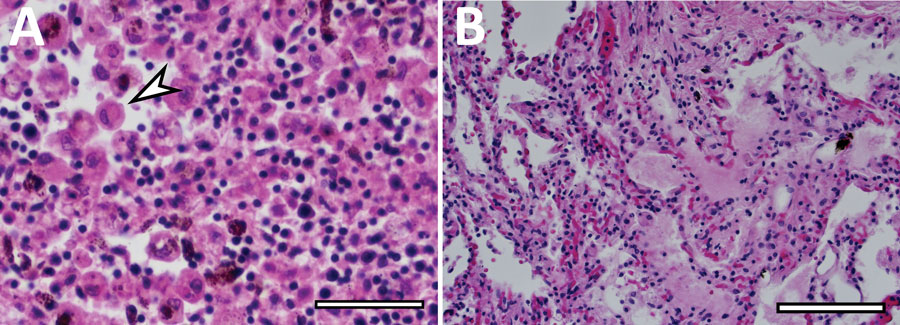Volume 29, Number 5—May 2023
Dispatch
Fatal Case of Heartland Virus Disease Acquired in the Mid-Atlantic Region, United States
Figure 1

Figure 1. Postmortem autopsy findings in a fatal case of heartland virus disease acquired in the mid-Atlantic region, United States. A) Hematoxylin and eosin stain of patient accessory spleen; arrow indicates congestion with hemophagocytic histiocytes. Scale bar indicates 50 μm. B) Hematoxylin and eosin stain showing pulmonary hyperinflammation, including pleural thickening and adhesions, and pulmonary fibrosis, edema, and calcifications. Scale bar indicates 125 μm.
1These first authors contributed equally to this article.
Page created: February 17, 2023
Page updated: April 19, 2023
Page reviewed: April 19, 2023
The conclusions, findings, and opinions expressed by authors contributing to this journal do not necessarily reflect the official position of the U.S. Department of Health and Human Services, the Public Health Service, the Centers for Disease Control and Prevention, or the authors' affiliated institutions. Use of trade names is for identification only and does not imply endorsement by any of the groups named above.